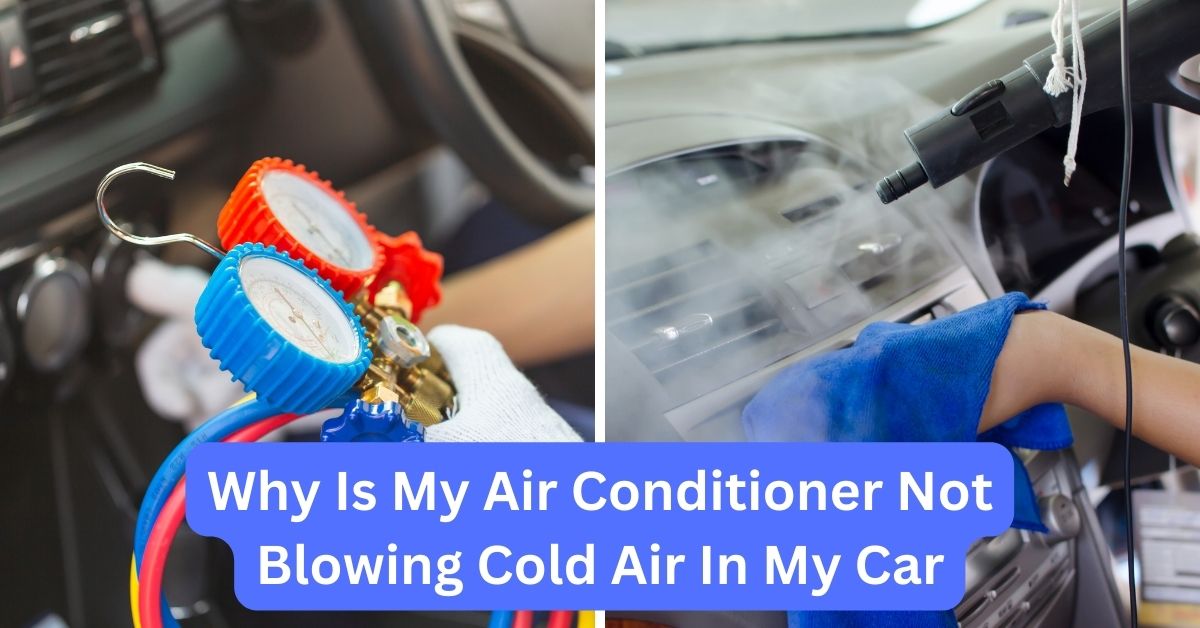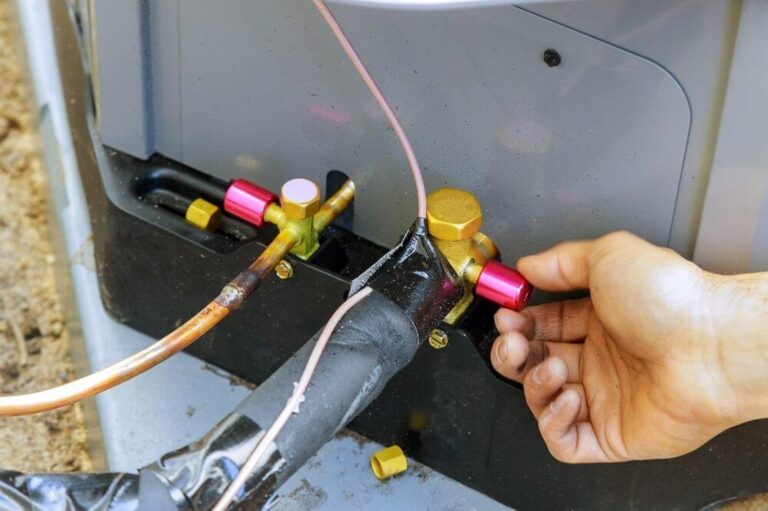Why Is My Car Ac Running But Not Cooling

Just like that frustrating moment when your home's central air kicks on, hums along, but barely lowers the thermostat, finding your car's AC running but not actually cooling can leave you sweating and stressed. Before you resign yourself to a sweltering commute, let's explore some common causes and simple solutions you can try yourself. We'll guide you through a step-by-step diagnostic process, highlighting when it's time to call in the pros.
Step 1: The Initial Assessment - Is the AC System Truly On?
Before diving deep, let's confirm the basics. Sometimes, what seems like a broken AC is simply a misconfigured setting.
- Check the AC Button: Ensure the AC button (often marked with "AC" or a snowflake icon) is illuminated. It might sound obvious, but sometimes it gets accidentally switched off.
- Fan Speed: Make sure the fan is set to a reasonable speed (not zero!). A weak fan can make even cool air feel insufficient.
- Recirculation Mode: Activate the recirculation mode (usually an icon depicting a U-turn arrow inside a car). This draws air from inside the cabin, which is already cooler, rather than hot outside air. This will maximize the cooling effect.
- Vent Selection: Confirm the vents are directed towards you. Sometimes vents get accidentally redirected, diminishing the cooling effect.
If you've confirmed these settings and the system still seems to be blowing warm or lukewarm air, proceed to the next step.
Step 2: Listen Closely - Identifying Unusual Sounds
Your car's AC system should operate relatively quietly. Unusual sounds can indicate specific problems. Listen carefully when the AC is switched on.
- Hissing Sound: A hissing sound, especially near the dashboard vents, could indicate a refrigerant leak. This often requires professional attention, as refrigerant is harmful and should only be handled by certified technicians.
- Clicking or Clunking: Clicking or clunking sounds, particularly when the AC is first turned on, might point to a faulty compressor clutch. This clutch engages the compressor, and if it's failing, the compressor won't operate effectively.
- Rattling Sound: A rattling sound coming from under the hood, near the compressor, could indicate loose components or a failing compressor.
- Squealing Sound: A squealing sound when the AC is engaged could suggest a worn serpentine belt. This belt powers the compressor, among other things.
Note the type of sound, its location, and when it occurs. This information will be valuable when seeking professional help.
Step 3: The Under-the-Hood Inspection - A Visual Check
Safely pop the hood and visually inspect the AC components. Exercise caution around a running engine – keep your hands and clothing clear of moving parts.
- Compressor: Locate the AC compressor. It's a pump-like device, usually driven by the serpentine belt. When the AC is turned on, the compressor clutch (the front part of the compressor) should engage and spin along with the pulley. If the pulley spins but the clutch doesn't engage, the compressor isn't working.
- Serpentine Belt: Examine the serpentine belt for cracks, fraying, or excessive wear. A damaged belt can slip, preventing the compressor from operating correctly.
- Condenser: The condenser looks like a small radiator and is typically located in front of the engine radiator. Check for debris (leaves, bugs, etc.) blocking airflow through the condenser fins. A blocked condenser can't effectively dissipate heat, reducing cooling performance.
- Refrigerant Lines: Visually inspect the refrigerant lines (the metal pipes connecting the AC components) for signs of damage, corrosion, or leaks (oily residue).
If you notice a severely damaged belt or a blocked condenser, these are issues you might be able to address yourself (see below).
Step 4: DIY Fixes - Addressing Simple Issues
Before rushing to a mechanic, try these simple DIY solutions. Remember to prioritize safety and disconnect the negative battery terminal before working on any electrical components.
- Cleaning the Condenser: Use a garden hose (with a gentle spray nozzle) to carefully rinse any debris from the condenser fins. Avoid using a high-pressure washer, as this can damage the delicate fins.
- Replacing the Serpentine Belt (If you're comfortable): Replacing a serpentine belt can be a straightforward task if you have the right tools and some mechanical aptitude. Consult your car's repair manual or online resources for specific instructions. However, if you're unsure about the process, it's best to leave this to a professional. A misaligned belt can cause further damage.
- Checking Fuses and Relays: Consult your car's owner's manual to locate the fuses and relays related to the AC system. Use a multimeter or a test light to check if the fuses are blown. A blown fuse can be replaced with a new one of the same amperage. Relays can sometimes be swapped with identical relays from other less critical systems (like the horn) to see if the AC starts working. If it does, you know the relay is the problem.
If these simple fixes don't restore your AC's cooling power, it's time to seek professional help.
Step 5: The Professional's Touch - When to Call a Mechanic
Certain AC problems require specialized knowledge, tools, and training. Here's when you absolutely need to consult a qualified mechanic:
- Refrigerant Leaks: Handling refrigerant requires specialized equipment and certification. Refrigerant leaks not only reduce cooling performance but also harm the environment.
- Compressor Problems: Diagnosing and repairing compressor issues, including a faulty compressor clutch or internal compressor damage, requires specialized tools and expertise. Replacing a compressor is a complex job.
- Electrical Issues: Complex electrical problems within the AC system, such as wiring issues or sensor malfunctions, require specialized diagnostic equipment and knowledge of automotive electrical systems.
- Evaporator Problems: The evaporator is located inside the dashboard. Accessing and repairing evaporator leaks or blockages is a labor-intensive process that usually requires removing the dashboard.
- Expansion Valve Issues: The expansion valve regulates the flow of refrigerant into the evaporator. Diagnosing and replacing a faulty expansion valve often requires specialized knowledge of AC systems.
Important Note: If you suspect a refrigerant leak, do not attempt to add refrigerant yourself using DIY recharge kits. These kits can be dangerous and often mask underlying problems. Taking your car to a certified technician is the safest and most effective solution.
Understanding Refrigerant and its Importance
Refrigerant is the lifeblood of your car's AC system. It's a special fluid that absorbs heat from inside the car and releases it outside, creating a cooling effect. Over time, refrigerant levels can decrease due to normal leakage or system malfunctions. Low refrigerant levels are a common cause of weak or no cooling.
When a technician services your AC system, they'll typically use a refrigerant identifier to ensure the correct type of refrigerant is used. Mixing different refrigerants can damage the system. They will also use specialized equipment to evacuate the old refrigerant, vacuum the system to remove moisture and air, and then recharge it with the correct amount of refrigerant.
Preventive Maintenance - Keeping Your AC Cool
Regular maintenance can help prevent AC problems and extend the life of your system. Here are a few tips:
- Run the AC Regularly: Even during the winter months, run your AC for a few minutes each week to keep the compressor lubricated and prevent seals from drying out.
- Inspect the Condenser: Periodically check the condenser for debris and clean it as needed.
- Check the Serpentine Belt: Regularly inspect the serpentine belt for signs of wear and tear.
- Have the System Serviced: Consider having your AC system professionally serviced every few years. This typically includes checking refrigerant levels, inspecting components, and performing a leak test.
Final Thoughts - Stay Cool and Informed
A car AC that's running but not cooling can be a frustrating problem, but by following these steps, you can diagnose and potentially fix some of the common causes yourself. Remember to prioritize safety and know when it's time to call in a professional. With a little knowledge and effort, you can keep your car cool and comfortable, no matter the weather outside. Happy driving!










